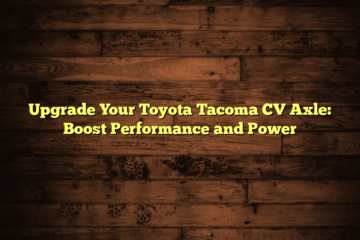What Direction Do Windmills Face?
Windmills are designed to face into the wind. This positioning allows the blades to capture the maximum amount of wind energy available. Traditional windmills would have been manually oriented to face the wind, but modern wind turbines are equipped with wind direction sensors and automatic yaw mechanisms that adjust the turbine to face the wind direction optimally as it changes.
The ability to pivot and face the wind is crucial for the efficiency of wind energy generation, ensuring that the windmills or turbines can operate effectively and produce electricity or mechanical power as intended.
Understanding Windmill Orientation and Efficiency
The direction a windmill faces is pivotal in harnessing wind energy effectively. This blog post explores the intricacies of windmill orientation, the technology behind modern wind turbines, and their impact on energy efficiency.
Introduction to Windmill Orientation
Windmills, ancient devices for converting wind energy into mechanical power, and their modern counterparts, wind turbines, rely heavily on their orientation towards the wind. The primary aim is to capture the maximum amount of wind energy. This post delves into how windmills and turbines are designed to face the wind and the technological advancements that optimize their efficiency.
Key Takeaways
- Windmills and wind turbines are designed to face into the wind to maximize energy capture.
- Traditional windmills required manual adjustment to face the wind, while modern turbines use automatic systems.
- Wind direction sensors and yaw mechanisms are crucial in modern turbines for optimal orientation.
- The efficiency of wind energy generation is significantly influenced by how well a windmill or turbine faces the wind.
- Technological advancements have greatly improved the ability of wind turbines to adjust to changing wind directions, enhancing overall efficiency.
The Basics of Windmill Orientation
Windmills convert wind energy into mechanical power or electricity by positioning their blades against the wind. The orientation of a windmill towards the wind is a critical factor in its ability to generate power efficiently.
Historical Windmills and Manual Orientation
Historically, windmills needed to be manually adjusted to face the wind. This was often done using a tail fin that kept the windmill oriented into the wind, or in the case of larger windmills, through a system that allowed the entire top of the windmill to be rotated.
Modern Wind Turbines and Automatic Adjustment
Modern wind turbines have evolved to include automated systems for orientation. Equipped with wind direction sensors, these turbines can automatically adjust their yaw (the rotational axis vertical to the ground) to face the wind optimally.
Technology Behind Wind Turbine Orientation
The orientation of wind turbines is controlled through a combination of wind direction sensors and yaw mechanisms. This technology ensures that turbines can respond to changes in wind direction swiftly and efficiently.
Wind Direction Sensors
Wind direction sensors, mounted on the nacelle (the housing atop the turbine that contains the generator and gearbox), measure the wind’s direction and communicate this information to the turbine’s control system.
Yaw Mechanisms
The yaw mechanism, a motor-driven system, adjusts the nacelle’s position to align the turbine’s blades with the wind direction. This adjustment is crucial for maintaining optimal efficiency in energy generation.
Impact on Energy Efficiency
The ability of a wind turbine to face the wind directly impacts its energy efficiency. Turbines that are optimally aligned with the wind can capture a greater amount of wind energy, converting it into electrical power more effectively.
Maximizing Wind Capture
By facing the wind, turbines can maximize the wind’s force on the blades, generating more power. The angle of the blades to the wind, known as the “angle of attack,” is also optimized to increase efficiency.
Challenges and Solutions
Turbines may face challenges such as sudden wind direction changes or gusts. Advanced control systems and robust yaw mechanisms are designed to address these challenges, ensuring the turbine remains effectively oriented towards the wind.
Conclusion
The direction windmills and wind turbines face is a fundamental aspect of their design, directly influencing their efficiency in generating power. Modern turbines are equipped with sophisticated sensors and mechanisms that automatically adjust their orientation to maximize energy capture from the wind. These advancements have significantly improved the viability and efficiency of wind energy as a renewable resource.
FAQ
Why must windmills face the wind?
Windmills need to face the wind to capture the maximum amount of wind energy, which is then converted into mechanical power or electricity.
How do traditional windmills adjust to wind direction?
Traditional windmills were adjusted manually or used a tail fin to keep them oriented into the wind.
What technology do modern wind turbines use to face the wind?
Modern wind turbines use wind direction sensors and yaw mechanisms to automatically adjust their orientation to the wind.
How does facing the wind affect a wind turbine’s efficiency?
When a turbine is properly oriented, it can capture more wind energy, leading to more efficient power generation.
Can wind turbines adjust to sudden changes in wind direction?
Yes, modern wind turbines are equipped with control systems that allow them to quickly adjust to changes in wind direction, maintaining their efficiency.




